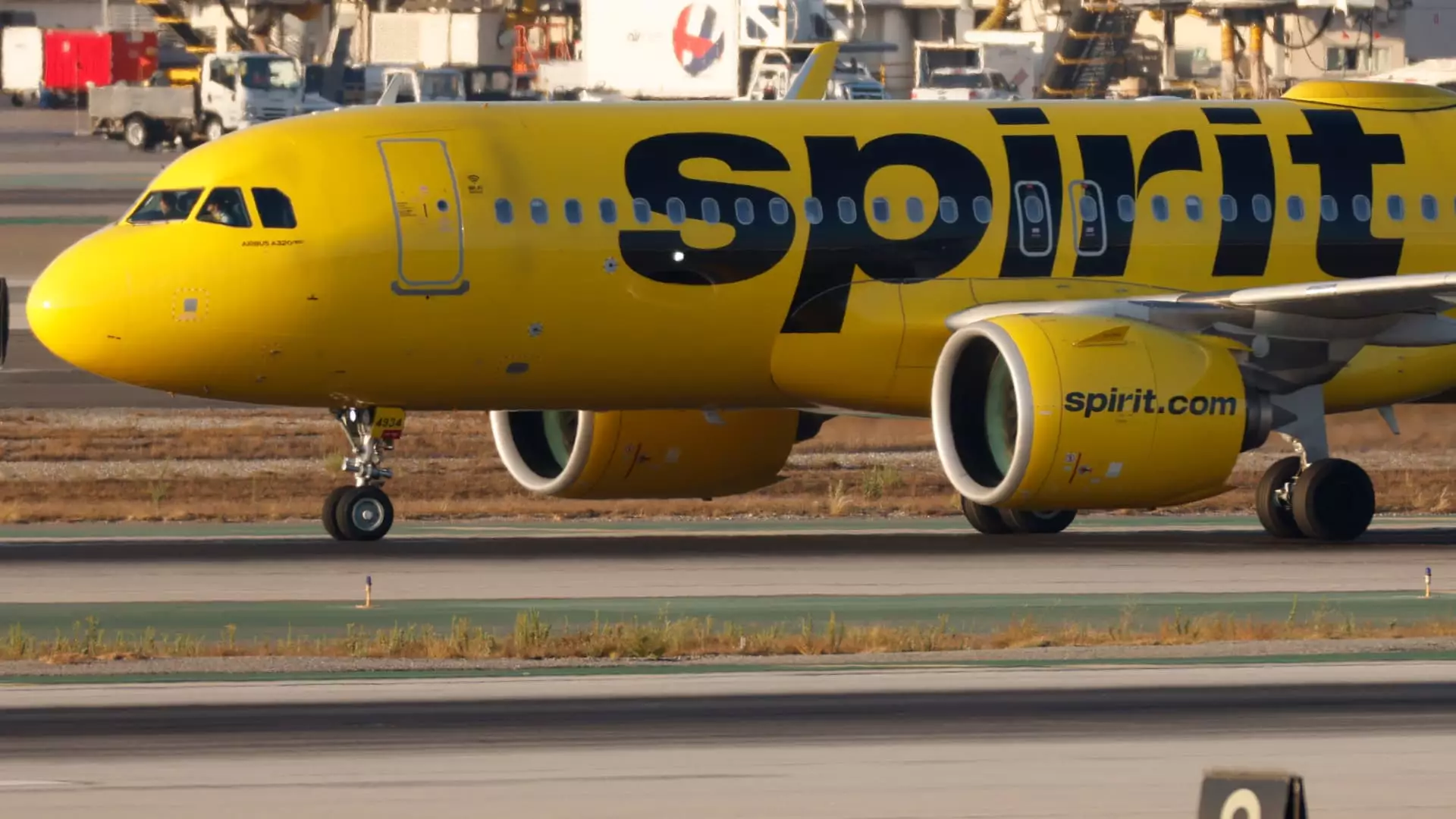Spirit Airlines has made headlines recently by successfully emerging from bankruptcy, achieving a turnaround many would have deemed improbable just a few years ago. CEO Ted Christie has articulated a vision of resilience, showcasing a leaner operation ready to engage in fierce competition against industry giants. This moment marks not just a new chapter for Spirit but a critical juncture in the admittedly tumultuous airline industry, where adaptability and strategic foresight are paramount. The question is whether Spirit can genuinely capitalize on the evolving landscape or if they are merely latching onto a shifting tide without an underlying foundation to ensure sustained success.
Southwest’s Bold Move: A Strategy Shift
In a striking development, Southwest Airlines, known for its customer-friendly policies, has announced a move to charge for checked baggage for the first time in its history. This decision sends shockwaves through the low-cost airline sector, and many see it as a desperate tactic made necessary by changing economic realities. For nearly five decades, Southwest has prided itself on providing customers with the convenience of two free checked bags. This free-for-all aspect has become a hallmark for the carrier and a driving force behind its immense popularity.
Now, as Southwest finally ditches this customer-centric strategy, the doors are flung open for competitors like Spirit to make their mark. Christie’s remarks seem not just opportunistic but also indicative of the shifting dynamics within the airline market. A significant customer segment may feel betrayed or confused, prompting them to seek alternatives that better align with their expectations; enter Spirit Airlines.
A La Carte Pricing: The Path Forward for Spirit?
Contrary to the ill-fated legacy of Southwest, Spirit has long championed an a la carte pricing model, where customers pay only for the services they want. This strategy has drawn criticism for its potential to confuse travelers but has also allowed the airline to thrive amidst financial chaos. With Southwest’s baggage charge implementation, Spirit’s pricing model could suddenly appear rational and appealing. Customers who once gravitated toward Southwest for its bag allowance may now question whether they rather pay for what they use and save money overall.
Chrisite confidently states that Spirit’s ticket bundles, which now include elements such as seat assignments and luggage, provide more value in this evolving ecosystem. However, one cannot overlook the fact that Spirit has historically faced hurdles, including significant losses and operational woes. Therefore, this strategy’s success hinges on whether the current customer base appreciates the a la carte model as a viable and cost-effective alternative to the long-established norms.
The Competitive Landscape: An Equal Playing Field?
Though Spirit remains but a fraction of the size of Southwest, it is no stranger to the competitive game, fighting fiercely in cities like Milwaukee and Nashville. As more travelers search through platforms like Expedia, there lies potential for Spirit to gain traction, particularly if they can offer lower fares. It is essential to note that ticket price alone is often not enough to sway traveler choice. Post-bankruptcy, Spirit can leverage its lean operational model to present an attractive value proposition, especially in contrast to Southwest’s recent missteps.
Contrast this with Delta Air Lines’ comments about potential opportunities arising from dissatisfied Southwest customers. To navigate such a challenging landscape, Spirit must focus not only on capturing market share but also on building a reputation that stands up against imminent backlash concerning their previous service perceptions.
Future Prospects: The High-Stakes Game Ahead
As Spirit Airlines gets back on its feet, one of the most scrutinized aspects of their strategy is their rumor-laden merger discussions with Frontier Airlines. While recent attempts have been turned down, the conversation implies a forthcoming consolidation trend in the low-cost sector. Strategic mergers could create a stronger, more viable competitor capable of challenging industry norms—but is Spirit’s leadership stable enough to maneuver these hazardous waters?
Ultimately, while Spirit Airlines has undoubtedly endured significant setbacks, it is also positioned uniquely at this moment of industry upheaval. The resurgence of opportunity following bankruptcy provides them a chance to redefine their brand while confronting Southwest’s newly adopted baggage charges head-on. The trajectory of Spirit may reveal whether resilience in the turbulent skies of competition is merely a passing phase or the groundwork for a new era in low-cost travel.


Leave a Reply